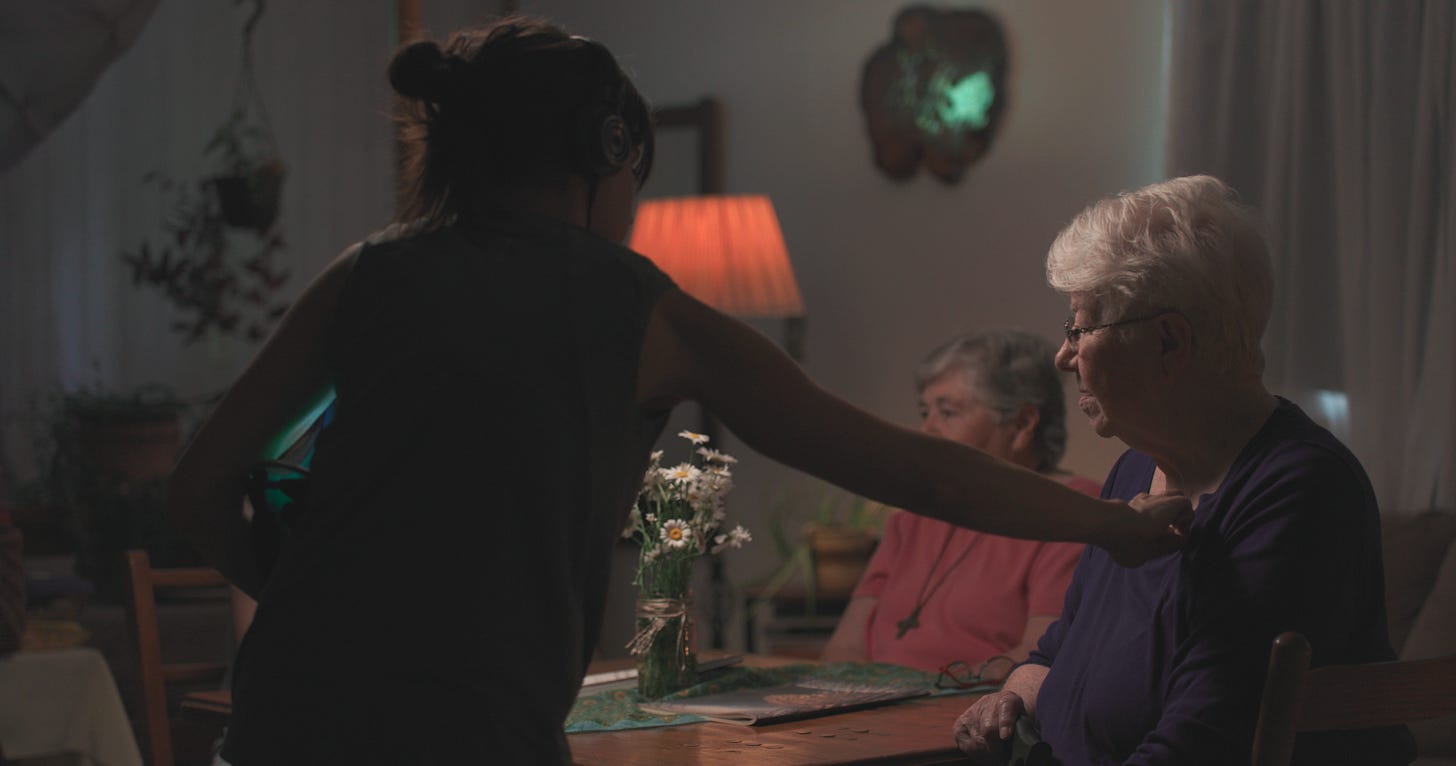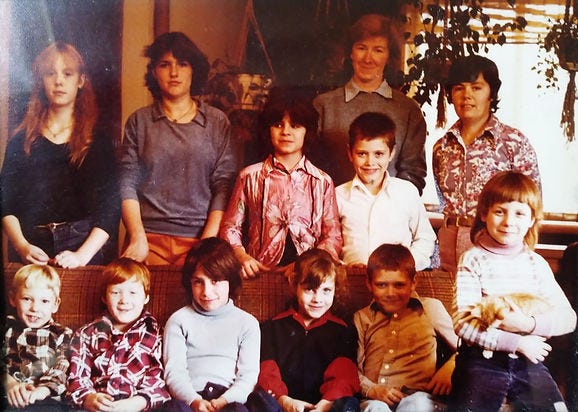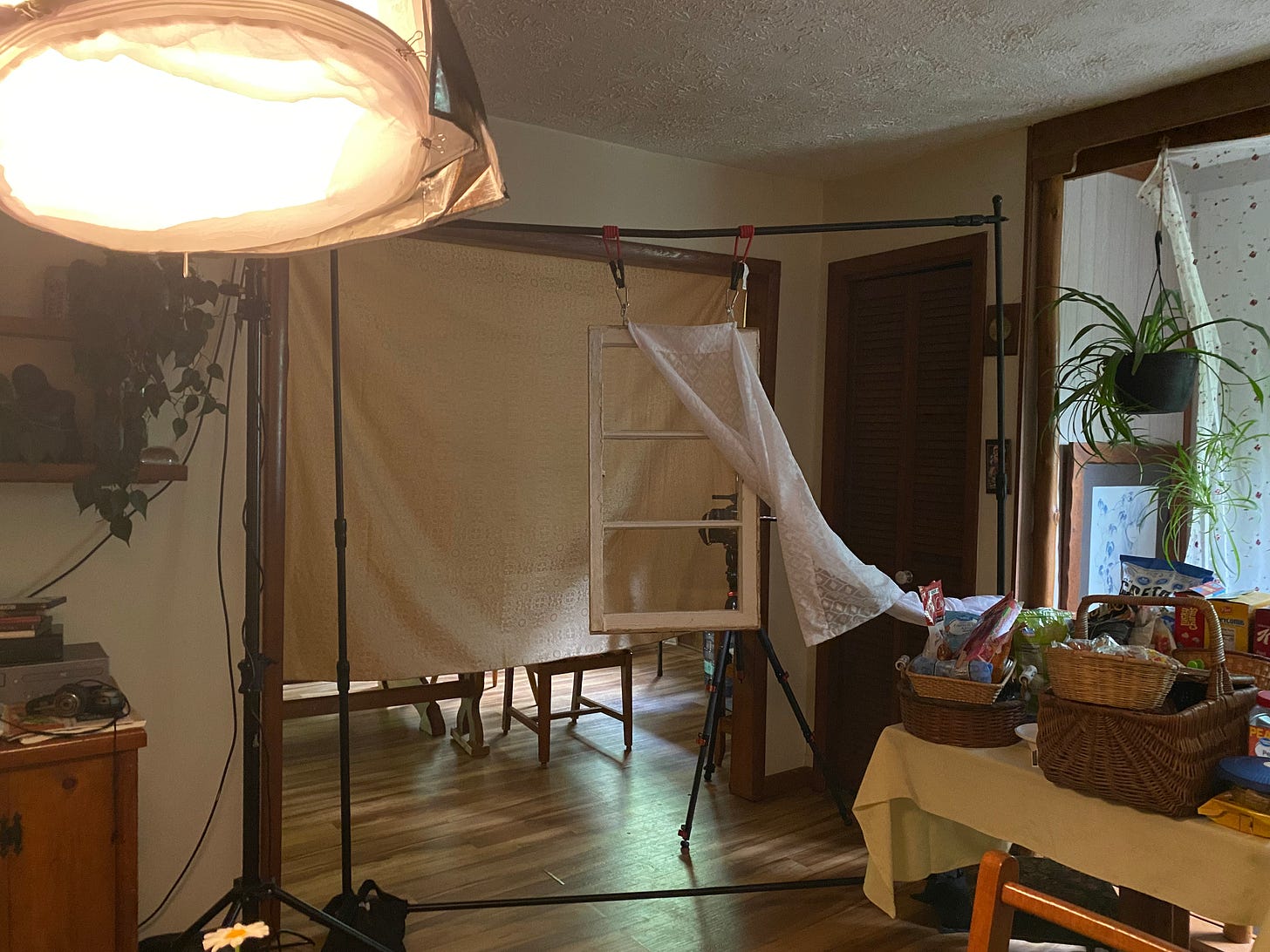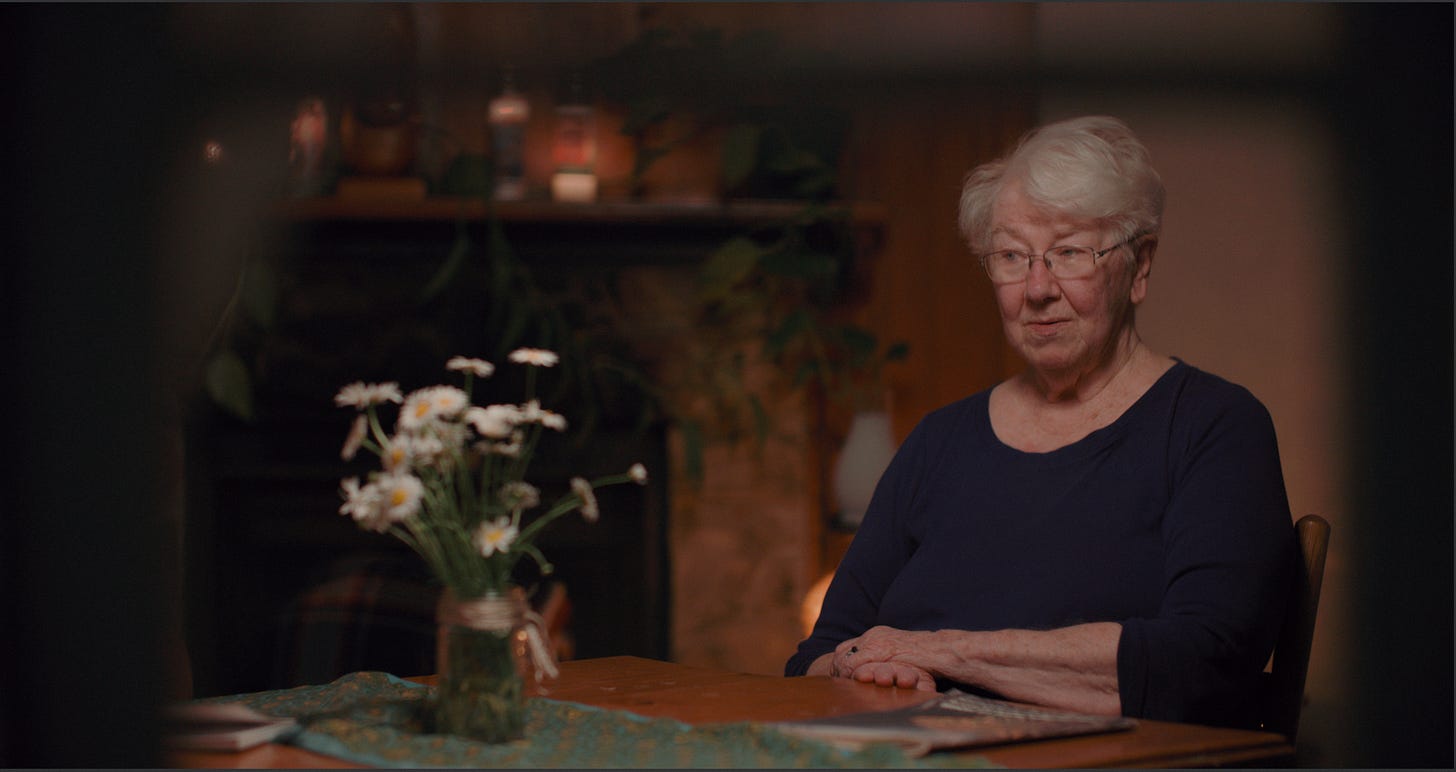Crafting On-Camera Conversations
How creative setups and unconventional techniques transformed a simple interview into a visually immersive experience.
Elaine putting a lavalier microphone on Sister Gretchen Shaffer, CSJ of Big Laurel.
One day in 2020, while researching for my film KING COAL, I found myself down a rabbit hole reading This Land is Home To Me (1975).
It’s a pastoral letter written by Catholic Bishops in Appalachia.
The work, which was written nearly 50 years ago, floored me.
I couldn’t believe how relevant it still was today in articulating the problems, challenges, and resilience of Appalachians.
Here is an excerpt below.
When the mountain people were separated from the land, destructive patterns took hold. “Take only what you need” was no longer a guiding principle. The world wanted more, more, more.
The air, the water, the trees, the coal, the land - seen as a commodity to be extracted by the giants. The people - in their desire to be needed by modern society - turned against the very land they lived upon.
They became separated from the cultures created in service of the mountain spirit. In service of an important function in human development. In service of an idol. The idol forms when they become absolutes and fail to yield, when the time has come, to other principles. Profit over people is an idol. A problem not only for mountain folk, but for everybody.
Appalachia’s suffering is a symbol of so much other suffering in our land, in our world. Many times before, outside forces have attacked the mountain’s dream. The attack wants to teach people that happiness is what you buy. It makes life a rat race, where nobody feels they belong, where all are pushed around, where roots disappear.
We get lost in our busy-ness and grow to hate and abuse all our things. No time to play or sing like folks used to. Worse still, swallowing us up in things is the power of the idol which eats away at our spirit. It would be bad enough if the attack only tried to take the land, but it wants the soul, too. When it has its way, the poet is silent.
Instead comes noisy blare and din, the chatter of a language empty of meaning but filled with violence. Now an alien culture battles to shape us into plastic forms empty of spirit, into beasts of burden without mystery.
Read the full texts here, including the latest one published in 2015.
I was struck by the poetics of the document, and how revolutionary it was for its time. I also admired the process of how it was made - Catholic workers were sent out into the community to listen to folks on the ground. Even though I’m not Catholic, I found this document to be a guiding light and humane effort, not too dissimilar to my documentary process.
So in 2021, I decided to interview the people closest to this piece of writing. I wanted to film it in a way I hadn’t before: unlike a traditional interview setup, but instead a conversation.
So I went to those closest to the source. In 1976, one year after the publication, Big Laurel was founded. Sister Gretchen and Kathy (pictured below) have been doing this work for decades. Grace Williams, an energetic newcomer, became director in 2018.
A class of students at Big Laurel School with Sister Gretchen Shaffer, CSJ and Sister Kathleen O’Hagan, SND (back row, right).
Sister Gretchen Shaffer, CSJ (left), Grace Williams (middle), Sister Kathleen O’Hagan, SND (right) at Big Laurel in 2021.
THE IDEA:
The scene I imagined was a quiet, low-lit, intimate conversation. I would curate the people and the topics - in this case two elders and a young person speaking about environmental justice from a spiritual point of view.
I wanted this scene to create a space of intergenerational learning - curating a conversation where multiple generations contribute and spark new dialogue.
THE WHY:
I am never too excited for a traditional on-camera interview. It’s probably because that’s where I began in my filmmaking process and it feels too easy.
To be clear, I LOVE interviews, but I don’t like the static, talking head.
It bores me to death as a piece of cinema.
I will often just record audio with a shotgun mic when I do interviews, as I find the camera often makes people nervous or gives them the feeling of being interrogated.
But for this, I wanted to see the three women. So I thought, how about a roundtable conversation instead?
THE HOW:
I imagined this taking place indoors on what would feel like a stage.
I wanted it to feel like we (the audience) were outside of a cottage window looking in and listening.
I borrowed an old wooden-framed window my mom had at her house.
I bought sheer curtains and a frame to hang it from.
I wanted the camera to be outside the frame, peering and listening to a conversation that was happening.
Below is what the final setup looked like.
We (Curren Sheldon, DP; Justin Murphy, PA; myself) removed most of the natural and artificial lighting in the room.
We blocked the large windows with blackout curtains, lit all the candles we could find around the house, and hung a diffused light above the table.
We planted a lav mic inside the flower arrangement in the middle of the table.
The final result is quite elegant and beautiful.
I love the framing, the soft lighting, the dark window-frame edges.
We achieved the look and feel I wanted. The content (words that were spoken) was very rich. The three women who participated were incredibly insightful and wonderful.
The weaknesses:
The concept of being outside looking in impeded the participants a bit.
I realized too late that to have me (a fourth non-participant listening on the sidelines) lob questions at them mid-conversation was distracting. Maybe I should have been at the table, but out of frame?
Also, I see now that three people talking is an awkward number. In threes people tend to split: one person mostly talks, one person mostly listens, and one person makes side comments - here and there. A potentially better setup would be two people in conversation. An equal exchange. Where each person knows their role.
To be clear, this is not the fault of the participants, this is an example of where concept, execution, and reality don’t meet. And that’s okay. It’s good to be honest when your ideas don’t meet reality.
The realization:
Even though I had gone to great lengths to make this LOOK beautiful, the reality is that seeing them in conversation was not all that useful.
I know you’re probably reading this and thinking - so what, people speaking IS interesting.
And yes, I agree. But I was seeking to make an immersive scene, not just a video of people speaking. I know that sounds strange in a world where YouTube hosts videos of podcasters just…talking…and talking.
At the risk of sounding like a snob, my idea of film, cinema, and video is that it should occupy its own realm.
Film should do something that print, theater, or radio, can’t do. Something that engages your senses and doesn’t just transmit information.
These opinions are influenced by filmmakers who have come before me, one being Maya Deren.
In her book of essays Essential Deren, Maya Deren expresses her feelings about the role of cinema and how it should occupy a different space than literature, theater, photography, and radio:
“A radio is not a louder voice, an airplane is not a faster car, and the motion picture should not be thought of as a faster painting or a more real play. This is not to say that cinema should or could replace the other art forms, any more than flight is a substitute for the pleasures of walking or for the leisurely panorama of landscape scene from a car or train window. Only when new things serve the same purpose better do they replace old things. Art, however, deals in ideas; time does not deny them, but may merely make them irrelevant. If cinema is to take its place beside the others as a full-fledged art form, it must cease merely to record realities that owe nothing of their actual existence to the film instrument. Instead, it must create a total experience so much out of the very nature of the instrument as to be inseparable from its means. It must determine the disciplines inherit in the new medium, discover its own structural modes, explore the new realms and dimensions accessible to it and so enriched our culture artistically a science has done and its own province. Do not look up on movies as a mere extension of the still photograph. I would say that the best study for the embryonic filmmaker is one of the time arts - dance or music - since after all motion pictures are concerned with time and with movement.”
At the end of the day, it was a beautiful conversation and I’m grateful to have witnessed it. Special thanks to Sister Kathy, Sister Gretchen, and Grace for their participation.
—
If you have questions about the process or any gear we used, leave them in the comments below.









